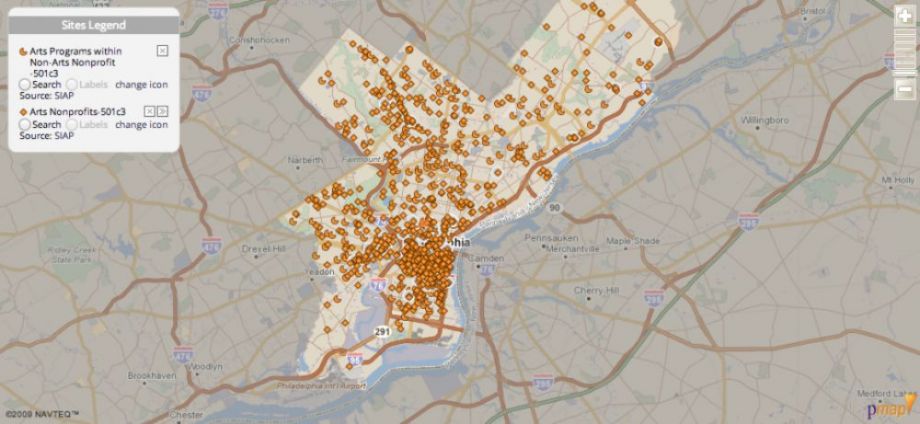In the world of big data, anything can be mapped — including, apparently, the creative economy and the artistic and cultural output that powers it.
This week, the City of Philadelphia released a compelling new online tool called CultureBlocks, a detailed atlas of the city’s cultural terrain.
CultureBlocks plots thousands of the city’s cultural assets, from the large and visible Kimmel Center for the Performing Arts to the Philadelphia Suns dance troupe. On top of that, users can layer other data: Demographics, public infrastructure, zoning and land use information.
It makes for some remarkable browsing. But CultureBlocks exists so that people and organizations can make better decisions. Say you want to open an art gallery. You’d need to find a commercial space, preferably mixed use. It might help to locate in a neighborhood with lots of resident artists, but also a high enough median income to actually support a local gallery.
Plug those criteria into CultureBlocks and the matching options are immediately highlighted, down to the parcel.
Or, take a real world example. The Food Trust, a local non-profit focused on food access issues, wants to start including local cultural programming at its night markets. With CultureBlocks, it can locate organizations within a few blocks of the market site, complete with contact information. APIARY, a Philly-based literary magazine, can make smarter decisions about where to distribute its limited copies.
The biggest users, though, are likely to be city officials and grant-making organizations.
“For funders, this makes it easy to see where their arts investments are,” said Moira Baylson, the city’s deputy cultural officer and director of CultureBlocks. “See where there’s a need. Find new groups and encourage them to reach out for funding.”
And for city officials, the map — and the analysis enabled by the data behind it — will help to set policy, Baylson said. No big policy shifts are imminent; the city released the map as soon as it was finished. So Baylson and other officials are just beginning to explore the city’s cultural terrain along with the public at large.
But the city’s partners in creating the tool — The Reinvestment Fund and the Social Impact of the Arts Program (SAIP) at the University of Pennsylvania — have been collecting this data for years and exploring the connection between cultural assets and economic development. CultureBlocks is really just another phase in that ongoing project. One of the jobs still underway is the creation of a “livability index” that meshes cultural impacts with other livability measures.
The depth of the research is staggering. This isn’t, as Baylson puts it, simply a listing of cultural organization you can “pull up on Yelp or Google.” SIAP has been exploring this terrain for so long, Baylson said, that it “know[s] what’s happening in neighborhoods across the city, down to the local drill team and church dance troupe. Even in neighborhoods that seem very distressed, there’s almost always some real cultural assets.”

Patrick Kerkstra has covered Philadelphia and the region for 12 years, including a decade at the Philadelphia Inquirer, where his beats ranged from City Hall to real estate development and the Iraq war. Now a freelancer, Patrick is a writer at large for Philadelphia Magazine, a special projects reporter for PlanPhilly and a guest columnist at the Inquirer, where he writes about urban affairs.
















